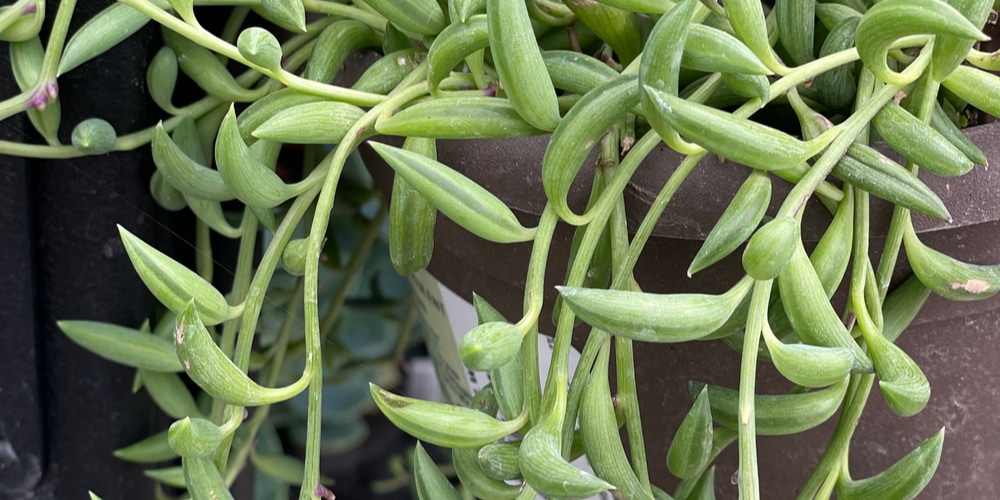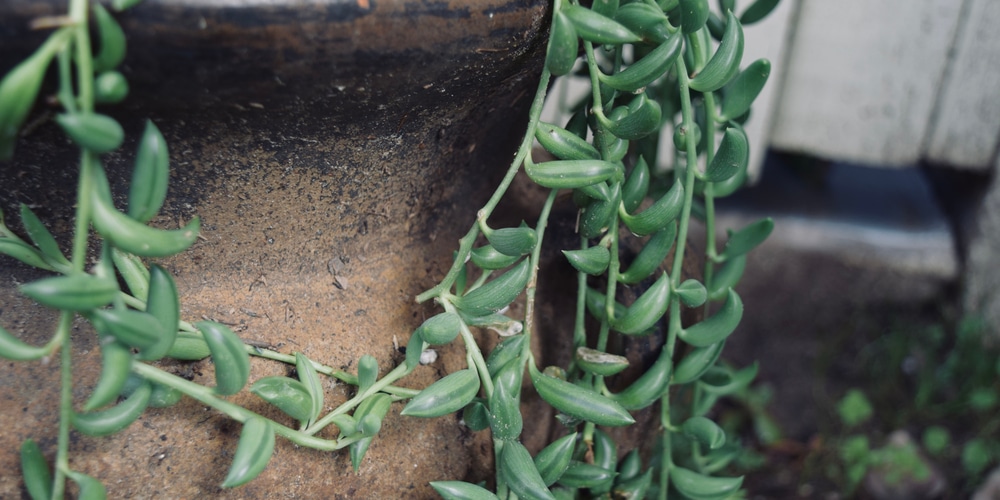If your string of bananas is dying, don’t worry – you’re not alone. This is a common problem that many gardeners face. There are several reasons your bananas may die; we will discuss them in this blog post.
We will also provide some tips on preventing this from happening. Keep reading for more information!
Why Is My String Of Bananas Dying?
The string of bananas plant (Senecio radicans) is a beautiful and unique addition to any home. It is easy to care for and grows quickly. However, the String of Bananas is susceptible to several problems that can cause it to die.
Some of the most common reasons for a String of Bananas plant to die are:
Overwatering
Overwatering is one of the most common problems regarding the growing String of Bananas. This Senecio radicans plant is susceptible to overwatering and will start to show signs of stress if it’s getting too much water. You’ll first notice that the leaves will begin to droop and turn yellow. The leaves will eventually turn brown and crispy if you continue to overwater.
The stem will also start to rot, and the plant will eventually die. While keeping your String of Bananas watered is essential, it’s easy to get into the habit of overwatering it.
To avoid overwatering, remember to check the soil before watering. Before you give your plant a drink, the soil should be dry to the touch. You should also be careful not to let the plant sit in water, leading to root rot. If you’re unsure how often to water your String of Bananas, it’s best to err on the side of caution and water less often rather than more.
Underwatering
Like all plants, String of Bananas requires the proper amount of water to thrive. If the plant is not watered frequently enough, the leaves will begin to drop off, and the stem will start to shrivel. Eventually, the plant will die if it does not receive enough water.
Overheating/High Temperatures
One of the most common reasons a String of Bananas plant dies is overheating. The plant begins to experience damage at temperatures above 80°F (27°C). Leaves will start to curl and turn brown, and the stems will begin to turn yellow or brown.
The plant will eventually die if it continues to experience high temperatures. One way to prevent overheating is to provide the plant with adequate airflow.
This can be done by ensuring that the pot has drainage holes and that the plant is not placed in direct sunlight. Additionally, it is essential to water the plant regularly, as this will help to keep the leaves cool and prevent the roots from drying out.
Direct Sunlight
The plant is typically green, but it can also be found in variegated varieties with yellow or white leaves. While the String of Bananas is commonly known as a houseplant, it can also be grown outdoors in locations with warm weather and indirect sunlight.
However, the leaves will wilt and die if the plant is exposed to direct sunlight for extended periods. In extreme cases, the entire plant can be killed by sunburn. To avoid this, it is crucial to choose a location for your String of Bananas that receives filtered sunlight or dappled shade throughout the day.
Poor Nutrition
If you have a String of Bananas plant that is dying, it may be due to poor nutrition. They need well-drained soil that is high in organic matter. If the plant is not getting enough nutrients, the leaves will turn brown and drop off. If you think your String of Bananas plant is dying because of poor nutrition, try giving it more light, water, and fertilizer.
Pests
One of the most common issues facing String of Bananas plants is an infestation of pests. These pests, which include spider mites, mealybugs, scale, and fungus gnats, can quickly kill a plant if left unchecked. In addition to causing damage to the plant itself, these pests can also spread diseases and harm other plants in the vicinity. The best way to control pests on a String of Bananas plant is to catch them early and take steps to remove them from the plant. In some cases, this may require the use of chemical pesticides.
However, many organic methods can be used to eliminate pests on a String of banana plants. No matter what method you choose, it is vital to act quickly when you see signs of pests on your plant.
Final Thoughts
If you think your String of Bananas plant is dying, it’s essential to look closely at the plant and identify the problem. Once you know what is causing the issue, you can take steps to correct it. In many cases, this will be enough to save the plant.
However, if the problem is severe or has been left unchecked for too long, it may not be possible to save the plant. In these cases, starting over with a new plant is best. With proper care, your String of Bananas plant will thrive and provide you with years of enjoyment.

